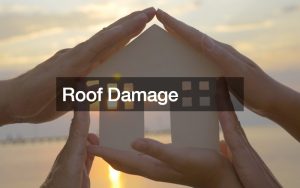
Home insurance serves as a financial safety net against unexpected events that can damage your property or belongings. Knowing the types of incidents typically covered by home insurance can help you understand when and how to file a claim effectively.
1. Water Damage
You can typically file a home insurance claim for water damage, but coverage will depend on the specifics of your policy and the cause of the water damage.
- Covered Perils: Home insurance policies typically cover water damage that is sudden and accidental, such as burst pipes, plumbing leaks, appliance malfunctions (like dishwashers or washing machines), and damage caused by storms (like roof leaks). Your plumbing company may be able to work with your insurance provider to cover repairs.
- Exclusions: Some types of water damage may not be covered, such as gradual leaks or seepage from poor maintenance or wear and tear over time. Flood damage from external sources, such as overflowing rivers or heavy rainfall, is generally not covered by standard home insurance policies and requires separate flood insurance.
- Extent of Coverage: Your policy will outline the specific coverage limits and deductibles for water damage. It’s important to review your policy documents or speak with your insurance agent to understand what is covered and under what circumstances you can file a claim.
2. Roof Damage
Whether your roof is made of asphalt shingles or another material, your insurance should help cover the costs of roof repair or replacement from expert roofing contractors. Home insurance typically covers roofing damage caused by sudden and accidental events that are beyond your control, such as:
- Storms: Damage from hail, windstorms, hurricanes, or tornadoes.
- Falling Objects: Damage from falling trees or branches.
- Fire: Damage caused by a fire that affects the roof and needs to be repaired by a roofer.
- Weight of Snow or Ice: Damage caused by the weight of accumulated snow or ice.
Certain types of roof damage may not be covered by standard home insurance policies, such as:
- Wear and Tear: Damage due to normal wear and tear over time.
- Neglect: Damage resulting from lack of maintenance or negligence.
- Roof Age: Some policies may prorate coverage based on the age of the roof.
- Flood or Earthquake: Damage from floods or earthquakes typically requires separate insurance coverage.
Your policy will specify the coverage limits, deductibles, and exclusions related to roofing damage. It’s important to review your policy documents or discuss with your insurance provider to understand what is covered and under what circumstances you can file a claim for roofing damage.
Roof Replacements
Home insurance may cover a roofing installation under certain circumstances, primarily when the replacement is necessary due to damage caused by a covered peril. Common covered perils include:
- Storm Damage: Damage from windstorms, hail, hurricanes, or tornadoes.
- Fire: Damage to the roof caused by a fire that originated from a covered source.
- Falling Objects: Damage from falling trees or branches.
Filing a Claim for Roof Replacement
If your roof sustains damage that you believe is covered by your home insurance policy, follow these steps to file a claim:
- Document the Damage: Take photos or videos of the damaged roof from multiple angles. Document any other property damage caused by the roof damage.
- Contact Your Insurance Company: Notify your insurance company promptly to initiate the claims process. They will provide guidance on what information they need and may send an adjuster to assess the damage.
- Provide Documentation: Be prepared to provide documentation, such as the cause of the damage (e.g., storm, fire), estimates for roof replacement, and any receipts or invoices related to temporary repairs or mitigation efforts.
- Cooperate with the Claims Process: Work closely with your insurance company and adjuster to provide any additional information they request and to follow their instructions regarding repairs or replacement.
3. Environmental Hazards
Some home insurance policies cover the cost of asbestos removal when it poses health risks or needs to be removed for regulatory compliance. If asbestos is discovered during renovations, insurance may cover the expenses associated with testing and safe removal. However, asbestos removal is usually seen as a precautionary step to protect against health risks associated with asbestos exposure, rather than a response to a covered loss or damage. As a result, your policy may not cover its removal.
Be sure to check with your policy. Most home insurance policies explicitly exclude coverage for maintenance-related issues, including the removal of hazardous materials like asbestos. Policies may also exclude coverage for costs associated with complying with local or federal regulations related to hazardous materials.
4. Home Renovations
During home renovations, coverage for damages can vary. While some policies cover damages caused during remodeling, such as basement renovations, it’s essential to review your policy to understand the extent of coverage. For instance, accidental damage to the foundation by a contractor during basement remodeling may be covered by insurance.
Home insurance policies generally do not cover the costs associated with home remodeling in and of itself. Home remodeling is typically considered a planned improvement or renovation rather than a response to sudden and accidental damage, which is what home insurance typically covers. Here’s a detailed explanation:
Home insurance policies are designed to protect against unexpected events that cause damage to your home or belongings, such as fire, theft, or storms. They are not intended to cover planned renovations or upgrades that you choose to undertake.
Most home insurance policies explicitly exclude coverage for home improvements, alterations, or renovations. These exclusions apply whether you are remodeling a kitchen, bathroom, basement, or any other part of your home.
If your remodeling project involves structural changes to your home, such as adding rooms, expanding the footprint, or altering load-bearing walls, these changes are typically not covered by home insurance.
If you are planning a major renovation or remodeling project, consider obtaining specialized renovation insurance or builder’s risk insurance. These policies can provide coverage for the structure and materials during construction, protecting you from financial loss if damage occurs during the project.
Home insurance typically includes liability coverage, which protects you financially if someone is injured on your property or if you accidentally damage someone else’s property. This coverage remains in effect during renovations, but it does not cover the cost of the renovations themselves.
5. HVAC Systems
Home insurance may cover HVAC (Heating, Ventilation, and Air Conditioning) system damage under certain circumstances, primarily when the damage is caused by a covered peril. Here’s a detailed explanation of how home insurance typically handles HVAC damage:
Coverage for HVAC Damage
Home insurance policies generally cover sudden and accidental damage to your HVAC system caused by covered perils, such as:
- Fire: Damage to the HVAC system due to a fire in your home.
- Lightning Strikes: Electrical damage to the HVAC system from a lightning strike.
- Windstorms or Hail: Physical damage to the HVAC unit caused by severe weather.
- Water Damage: If your HVAC system is damaged due to a sudden and accidental water event, such as a burst pipe or an appliance leak, the resulting damage to the HVAC system and repairs from HVAC contractors may be covered.
- Mechanical Breakdown Coverage: Some home insurance policies offer optional coverage for mechanical breakdowns, which may extend to include HVAC systems. This coverage would apply to failures due to mechanical or electrical breakdown, but it’s typically an optional add-on rather than a standard inclusion.
If your HVAC system has experienced substantial damage, be sure to contact your HVAC services for a professional opinion and to get an estimate.
Exclusions and Limitations
Home insurance does not cover damage to your HVAC system caused by normal wear and tear, aging, or lack of maintenance. Damage resulting from neglect or failure to properly maintain your HVAC system is generally not covered. Coverage may vary between repairing the HVAC system to restore functionality versus replacing it entirely. Your policy terms and conditions will specify the extent of coverage and any applicable deductibles.
6. Wildlife Infestation
Certain types of damage caused by wildlife infestations may be covered by home insurance. If wildlife nests in your attic, damaging insulation and wiring, insurance may help cover the repair costs associated with such damage. However, home insurance typically does not typically cover wildlife removal or damage caused by wildlife.
Some insurance policies may provide limited coverage for damage caused by certain types of wildlife if the damage is sudden and significant, such as a bear breaking into a garage or a deer crashing through a window. However, these situations are rare and often subject to specific policy terms and conditions.
If wildlife infestations are a concern for you, consider purchasing a separate wildlife or pest control insurance policy, if available, which may provide coverage for removal and damage caused by wildlife.
7. Fire Damage
Home insurance provides coverage for damages caused by fires, including structural damage, smoke damage, and temporary housing expenses if necessary. For instance, if a kitchen fire spreads and damages cabinets, countertops, and part of the ceiling, insurance would typically cover the costs of restoration.
Coverage for Fire Damage
- Dwelling Coverage: Home insurance policies provide coverage for the structural damage to your home caused by fire. This includes repairs or rebuilding costs for damage to the walls, roof, floors, and other structural components of your house.
- Personal Property Coverage: Home insurance also covers your personal belongings that are damaged or destroyed by fire. This includes furniture, clothing, electronics, appliances, and other items affected by the fire.
- Additional Living Expenses: If your home becomes uninhabitable due to fire damage, home insurance may cover additional living expenses. This can include the cost of temporary housing, meals, and other necessary expenses while your home is being repaired or rebuilt.
Additional Coverage
- Fire Department Charges: Some home insurance policies may cover charges incurred from the fire department responding to and extinguishing a fire on your property.
- Smoke Damage: Damage caused by smoke from a fire, such as staining walls or furniture, may also be covered under your home insurance policy.
Filing a Claim for Fire Damage
If your home sustains fire damage, follow these steps to file a claim with your insurance company for fire damage restoration:
- Document the Damage: Take photos or videos of the fire damage to your home and personal belongings. Make a list of all damaged items.
- Contact Your Insurance Company: Notify your insurance company as soon as possible to begin the claims process. They will provide guidance on what information they need and may send an adjuster to assess the damage.
- Provide Documentation: Be prepared to provide documentation, such as the cause of the fire, estimates for repairs or replacement of damaged items, and any receipts or invoices related to temporary living expenses.
- Cooperate with the Claims Process: Work closely with your insurance company and adjuster throughout the claims process. Provide any additional information they request promptly and follow their instructions regarding repairs or replacement.
Understanding the specifics of what your home insurance policy covers is crucial for guaranteeing you have adequate protection against unforeseen events. Always review your policy details carefully and consult with your insurance provider to clarify coverage terms and conditions. Knowing when and how to file a claim can make a significant difference in recovering from unexpected incidents without undue financial strain.
Home insurance is crucial for protecting your most valuable investment—your home. It provides financial security by covering damages from unforeseen events like fires, storms, vandalism, and theft. Beyond property protection, home insurance offers liability coverage, shielding you from legal expenses if someone is injured on your property. It also helps cover additional living expenses if your home becomes uninhabitable due to covered damage. With the right policy and insurance research, you gain peace of mind knowing that you’re financially protected against unexpected losses, allowing you to focus on enjoying your home and maintaining its value for years to come.






